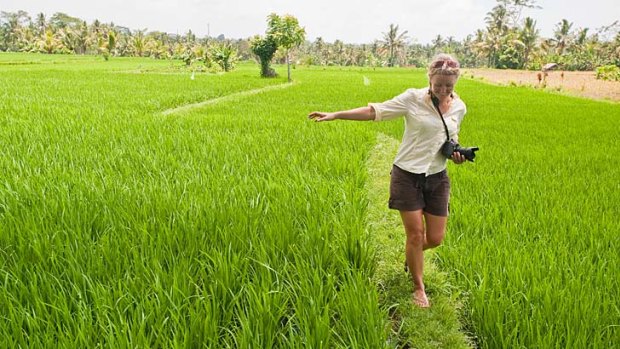
Bali snapshot... Indonesia is the second-most popular destination for Australians.Credit: Getty Images
Authorities have changed the risk rating for a destination Australians already flock to. Did anybody notice, asks Steve Dow.
Australia has lowered its security warning for Indonesia, after a decade of urging holidaymakers to "reconsider" their need to travel. But do we change our plans based on travel advice ratings - or pay attention only when it suits us?
The advice regarding Indonesia is to "exercise a high degree of caution", bringing the rating back to where it was before the 2002 Bali bombings. Yet despite another attack in 2005 and attacks on Western hotel chains in Jakarta in 2009, Australians' short-term visits to Indonesia rose from 288,000 in 2001 to 877,000 last year. Indonesia became our second-most visited destination after New Zealand, pushing the US into third place.
What has changed to lower the Indonesia risk rating issued by the Department of Foreign Affairs and Trade and posted on the smartraveller.gov.au site? Information from the embassy in Jakarta, the consul-general in Bali, intelligence reports and threat assessments indicate the "capacity and intent of terrorists to carry out attacks is less than it was", says the consular policy head, Paula Ganly.
The "ability and commitment of Indonesian security authorities to address the threat has improved," she says.
Complacency creeps in among travellers if a rating stays at a high level, Ganly says, yet Australians have been very much aware of the "reconsider the need to travel" warning.
Some student organisations prevented young people from travelling to Indonesia because of the high advisory level, Ganly says. But despite this, the high Australian dollar contributed to Indonesia's rise as a short-term holiday destination. High-security warnings on the rating system dampen corporate travel in large companies, says the chief executive of the Australian Federation of Travel Agents, Jayson Westbury, "but I don't necessarily think those risk ratings detract from people travelling in a leisure sense".
There have been "short-term dips" in Australians holidaying in Bali, such as when Indonesia was preparing to execute the bombers, Westbury says. But he says the federal government has done "as good as you can expect" in promoting Smartraveller.
Indonesia has long voiced its displeasure at a decade of Australia rating its security risk on par with Pakistan and Nigeria. However, Ganly says realpolitik, trade concerns or diplomacy are not factored into risk-rating changes and Australia's foreign minister has no input into determining the rating. "A minister can ask us questions about travel advice and why it's at a certain level," Ganly says, "but I've been here 12 months and I haven't had those questions asked of me by a minister."
The consular information section's director, Simon Twisk, says Fiji - which 337,000 Australians visited last year, up from 94,000 in 2001 - is an example of the rating system's effectiveness. Fiji is at the lowest level, number one ("exercise normal safety precautions"). The main island's western division, including Nadi and the Coral Coast, was raised to level three ("reconsider your need to travel") for a few days during flooding earlier this year. It appears Australians took notice of that.
Sign up for the Traveller newsletter
The latest travel news, tips and inspiration delivered to your inbox. Sign up now.